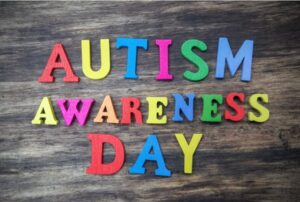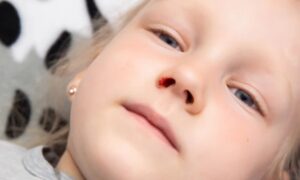Pink eye, also known as conjunctivitis, is a common eye condition in children that can cause redness, irritation, and discomfort. While it is usually not serious, it spreads quickly, making it important for parents to understand how to manage and prevent it. In this article, we’ll explore the causes, symptoms, treatments, and prevention methods to help parents navigate this common childhood infection.
What is Pink Eye?
Pink eye occurs when the conjunctiva, the thin layer of tissue covering the white part of the eye and inner eyelid, becomes inflamed. This inflammation can result from bacterial, viral, or allergic reactions, each requiring different treatments.
- Bacterial Pink Eye: Caused by bacteria such as Staphylococcus aureus, Streptococcus pneumoniae, and Haemophilus influenzae, this type often results in thick, yellow, or green eye discharge that may cause eyelids to stick together, especially in the morning.
- Viral Pink Eye: Usually caused by adenovirus, this form is often linked to colds and respiratory infections. Symptoms include watery discharge, redness, and a gritty sensation in the eye.
- Allergic Pink Eye: This occurs due to pollen, pet dander, or dust, leading to itchy, red, and watery eyes. Unlike bacterial and viral pink eye, it is not contagious and is often seasonal.
How Does Pink Eye Spread?
Pink eye is highly contagious when caused by a virus or bacteria. Children can easily spread it through direct contact with contaminated surfaces, objects, or people. Common ways it spreads include:
- Touching the eyes with unwashed hands
- Sharing personal items like towels, pillows, or washcloths
- Using contaminated makeup, eye drops, or contact lenses
- Coughing or sneezing near others (for viral pink eye)
Because young children often touch their eyes and faces, pink eye can quickly spread in schools, daycare centers, and playgrounds.
Signs and Symptoms of Pink Eye in Children
Parents should watch for these symptoms if they suspect pink eye:
- Redness and swelling in one or both eyes
- Increased tear production or watery discharge
- Yellow, green, or white eye discharge that may crust over
- Eyelids that stick together, especially after waking up
- A gritty or burning sensation in the eye
- Sensitivity to light (photophobia)
If a child also experiences fever, swollen lymph nodes, or sore throat, the pink eye may be linked to a viral infection like adenovirus.
When to See a Doctor?
While mild cases of pink eye often clear up on their own, parents should contact a doctor if:
- The child experiences severe pain or light sensitivity
- Vision is affected or blurry
- Symptoms do not improve within 3–5 days
- There is thick yellow or green pus-like discharge
- The child has a weakened immune system
Doctors may conduct an eye examination or take a sample of the discharge to determine the cause and recommend the right treatment.
How is Pink Eye Treated?
Treatment depends on the cause of the infection:
1. Bacterial Pink Eye Treatment
- Antibiotic eye drops or ointment are often prescribed to fight bacteria. Improvement is usually seen within 24–48 hours of starting treatment.
- Parents should apply eye drops as directed and avoid touching the tip of the bottle to prevent contamination.
2. Viral Pink Eye Treatment
- No antibiotics are needed, as viral infections must run their course. Symptoms usually improve within a few days to a week.
- Warm compresses and lubricating eye drops can help relieve discomfort.
- Encourage the child to rest and stay hydrated to support recovery.
3. Allergic Pink Eye Treatment
- Antihistamine eye drops or oral medication may be recommended to reduce allergic reactions.
- Avoid exposure to known allergens like pollen, dust, and pet dander.
- Cold compresses can help soothe irritation and swelling.
Home Remedies to Ease Discomfort
While following medical advice, parents can also help manage symptoms at home:
✔ Use a warm or cool compress: Soak a clean cloth in warm or cold water and place it over the closed eye for a few minutes. This helps reduce swelling and irritation.
✔ Clean the eyes gently: Use a damp cotton ball or tissue to remove crusty discharge. Always wipe from the inner corner outward and use a separate tissue for each eye.
✔ Encourage frequent handwashing: This prevents further spread to other family members.
✔ Limit screen time: Bright screens may increase discomfort and eye strain.
✔ Ensure proper hygiene: Change pillowcases and towels daily until the infection clears.
Can My Child Go to School with Pink Eye?
If a child has bacterial or viral pink eye, they should stay home until symptoms improve, especially if there is eye discharge. Schools and daycare centers often require children to be symptom-free for 24 hours before returning.
If the pink eye is allergy-related, the child can still attend school since it is not contagious.
Preventing Pink Eye in Children
To minimize the risk of pink eye, parents should encourage good hygiene habits:
- Teach kids to wash their hands regularly, especially before touching their face.
- Remind children not to share towels, washcloths, or eye makeup.
- Regularly disinfect common surfaces like doorknobs, tables, and toys.
- Ensure proper contact lens hygiene if the child wears them.
- Limit exposure to allergens for children with allergies.
Parents can also boost their child’s immune system with a healthy diet, adequate sleep, and regular exercise, as a strong immune system can help fight infections more effectively.
Common Myths About Pink Eye
🔸 Myth: Pink eye is always caused by an infection.
✅ Fact: Allergies, chemicals, and even irritation from swimming pools can also cause pink eye.
🔸 Myth: You can’t get pink eye from touching someone who has it.
✅ Fact: Direct contact with eye discharge or contaminated objects can easily spread the infection.
🔸 Myth: You should cover the infected eye with a patch.
✅ Fact: Covering the eye traps bacteria and worsens the infection.
Final Thoughts
Pink eye is a common but manageable condition in children. While it can be uncomfortable and contagious, most cases resolve quickly with proper care. Parents should monitor symptoms, maintain good hygiene, and seek medical advice if necessary. By taking preventive steps, pink eye can be managed effectively and kept from spreading within families and schools.













